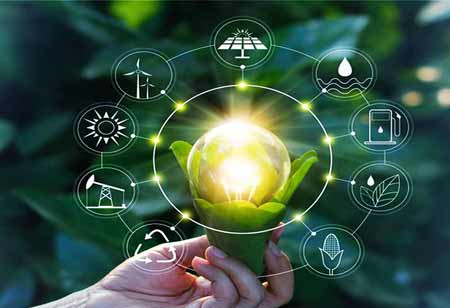Thank you for Subscribing to Energy Business Review Weekly Brief
Impacts Of Fracking On the Environment
This natural gas thrives greatly thanks to hydraulic fracturing, generally known as fracking.

By
Energy Business Review | Thursday, November 17, 2022
Stay ahead of the industry with exclusive feature stories on the top companies, expert insights and the latest news delivered straight to your inbox. Subscribe today.
Natural gas is mainly because of hydraulic fracturing, which employs high-pressure fluid injection to shatter rock formations.
FREMONT, CA: This natural gas thrives greatly thanks to hydraulic fracturing, generally known as fracking. This extraction process includes chemicals (often toxic) with huge amounts of water and sand at high pressure to destroy the earth and rocks. Fracking is controversial due to the number of natural resources it uses and the adverse effects it can possess on the air and water quality of the gowned areas.
Fracking and Air Quality
One of the main pollutants released in fracking is methane, a greenhouse gas that catches 25 times more heat than carbon dioxide.
In addition to methane, fracking releases toxic compounds like nitrogen oxides, hydrogen sulfide, benzene, and other hydrocarbons, forming smog and ozone that can induce health issues for those nearby. In addition, local air pollution can exacerbate asthma and other respiratory circumstances.
Fracking fluid is a blend of water, chemicals, and solid particles utilized to penetrate and fracture the underground rock. The EPA has identified over a thousand chemicals used in fracking fluid. Several are considered damaging to human health. Other ingredients are reasoned trade secrets and are not shown to the public.
Fracking and Water Quality
Fracking utilizes large amounts of water and discharges toxic chemicals into the surrounding water table. According to the EPA, each well intakes a median of 1.5 million gallons, adding up to billions nationwide annually. Not only does this decrease the amount of water convenient for drinking and irrigation, but it also endangers polluting local sources with polluted wastewater.
The byproduct of fracking's water intake is billions of gallons of wastewater that petrochemicals may contaminate. Most are injected into underground wells, and what isn't injected is sent for treatment. The EPA emphasizes potential leakage from wastewater storage pits or accidental discharges during transport as risks to the potable water supply.
Fracking and Earth and Soil Quality
Along with air and water pollution, fracking can have long-standing effects on the soil and surrounding vegetation. The high salinity of wastewater spills can decrease the soil's ability to support plant life.
Fracking also causes seismic activity. Following the hydraulic fracturing boom, tremors have risen dramatically, specifically in areas with frequent drilling. Following the completion of drilling activities, the resultant waste fluids are often disposed of by injecting them into deep wells at pressures fairly high to cause damaging earthquakes.
What Are the Strengths and weaknesses of Fracking?
Fracking is a cheap way to extract oil or natural gas with impermeable rock that cannot be attained through conventional drilling. Still, fracking requires injecting large volumes of water that can contaminate local soil and water supplies.
It also releases high quantities of methane and air contaminants that can cause health problems and climate change. Nonetheless, natural gas produces even less pollution than coal, the greatest competitor to natural gas in the United States.






